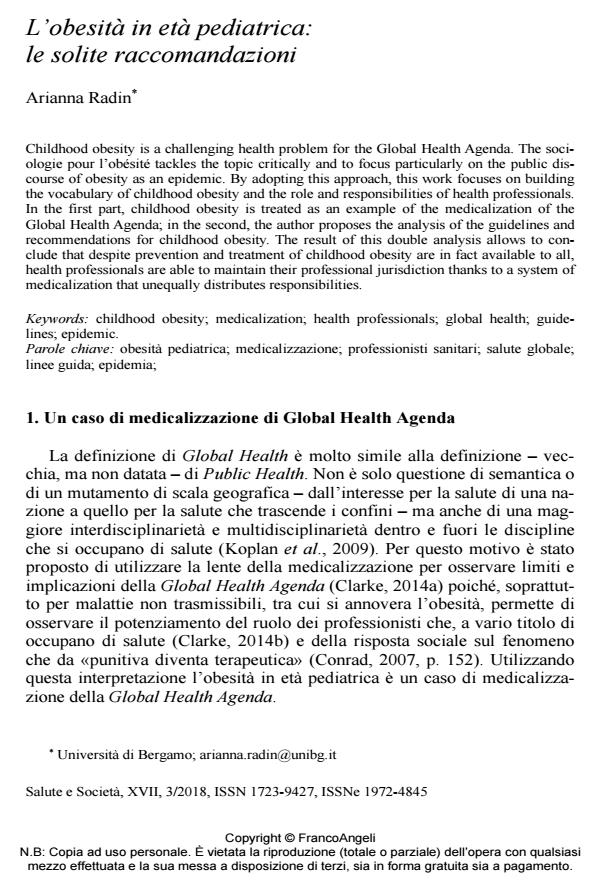L’obesità in età pediatrica: le solite raccomandazioni
Journal title SALUTE E SOCIETÀ
Author/s Arianna Radin
Publishing Year 2018 Issue 2018/3
Language Italian Pages 14 P. 89-102 File size 163 KB
DOI 10.3280/SES2018-003007
DOI is like a bar code for intellectual property: to have more infomation
click here
Below, you can see the article first page
If you want to buy this article in PDF format, you can do it, following the instructions to buy download credits

FrancoAngeli is member of Publishers International Linking Association, Inc (PILA), a not-for-profit association which run the CrossRef service enabling links to and from online scholarly content.
Childhood obesity is a challenging health problem for the Global Health Agenda. The soci-ologie pour l’obésité tackles the topic critically and to focus particularly on the public dis-course of obesity as an epidemic. By adopting this approach, this work focuses on building the vocabulary of childhood obesity and the role and responsibilities of health professionals. In the first part, childhood obesity is treated as an example of the medicalization of the Global Health Agenda; in the second, the author proposes the analysis of the guidelines and recommendations for childhood obesity. The result of this double analysis allows to conclude that despite prevention and treatment of childhood obesity are in fact available to all, health professionals are able to maintain their professional jurisdiction thanks to a system of medicalization that unequally distributes responsibilities.
Keywords: Childhood obesity; medicalization; health professionals; global health; guidelines; epidemic.
Arianna Radin, L’obesità in età pediatrica: le solite raccomandazioni in "SALUTE E SOCIETÀ" 3/2018, pp 89-102, DOI: 10.3280/SES2018-003007